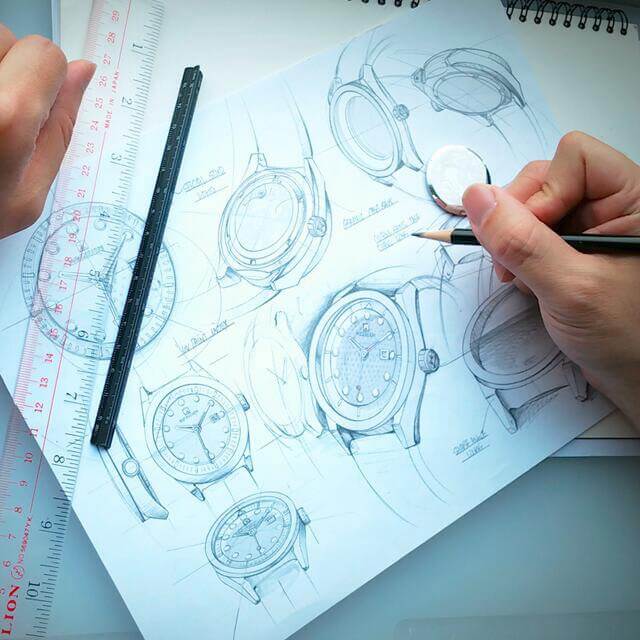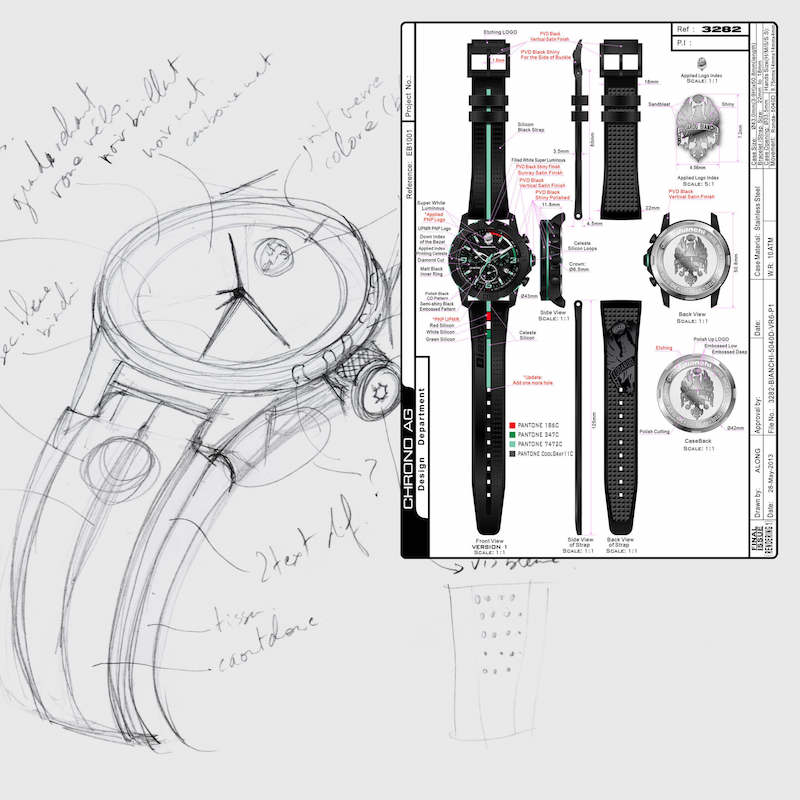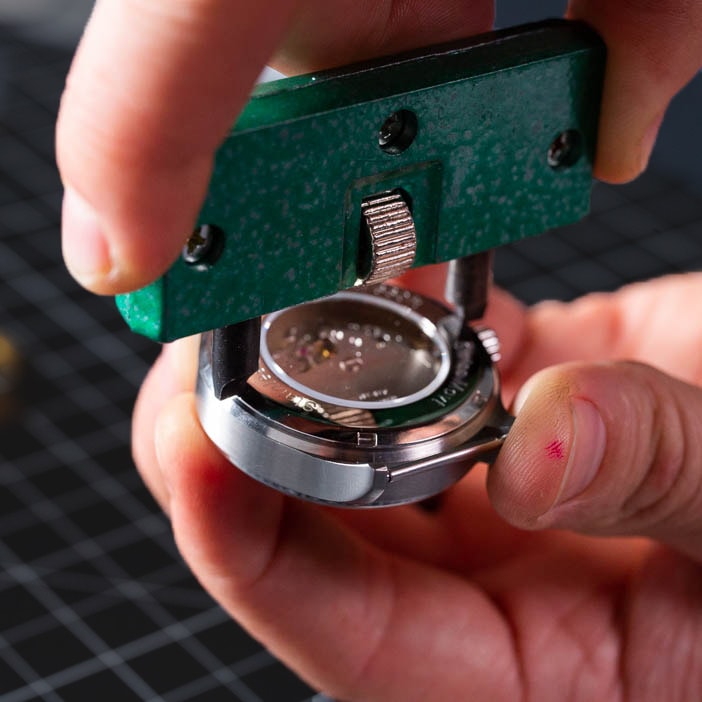Introduction:
Watches have been a staple accessory for both men and women for centuries. They not only serve as a functional timepiece but also as a fashion statement. How to make watches? The process of making watches is a meticulous and intricate craft that requires a deep understanding of mechanics, precision, and design.
The art and science of watchmaking are a testament to the ingenuity and dedication of those involved in the craft. From the initial design to the final presentation, each step showcases the meticulous balance of artistry and precision that defines watchmaking. The collaborative spirit of the watchmaking community ensures that this timeless art form continues to thrive and evolve, offering enthusiasts and collectors alike an opportunity to appreciate and enjoy the exquisite craftsmanship of these remarkable timepieces.
In today’s fast-paced world, the art of watchmaking may seem like a dying craft. However, the meticulous process of creating a timepiece is still cherished by many. From the intricate design to the precise engineering, the art of watchmaking truly embodies the convergence of art and science. In this comprehensive guide, we will delve into the steps of creating a watch, from the initial design to the final assembly.
Part 1: The Design Process
Level 1: The Art of Design
Designing a watch is a complex and highly creative process. The first step involves sketching out the initial concepts, taking into consideration the style, size, and functionality of the watch. This requires a keen eye for detail and a deep understanding of aesthetic principles.
Level 2: The Science of Engineering
Once the design is finalized, it is essential to translate the artistic vision into a functional timepiece. This involves precise engineering to ensure that the watch will accurately keep time and withstand the rigors of daily wear. Every component must be meticulously measured and crafted to exact specifications.
Part 2: Material Selection
Level 1: The Art of Aesthetics
Choosing the right materials is crucial in bringing the design to life. From stainless steel to precious metals, each material has its own unique aesthetic appeal. The selection of materials also plays a significant role in the overall look and feel of the watch.
Level 2: The Science of Durability
In addition to aesthetics, the durability of the materials is a critical factor in ensuring the longevity of the watch. For example, the selection of a scratch-resistant sapphire crystal can significantly impact the watch’s ability to withstand daily wear and tear.
Part 3: Manufacturing Process
Level 1: The Art of Craftsmanship
The manufacturing process of a watch involves a combination of traditional craftsmanship and modern technology. Each component of the watch, from the case to the dial, is meticulously crafted with precision and attention to detail.
Level 2: The Science of Precision
Precision is the cornerstone of watchmaking. Every step of the manufacturing process, from cutting the components to assembling the movement, requires precise measurement and execution. This ensures that the watch will function flawlessly and keep accurate time.
Part 4: Assembly
Level 1: The Art of Assembly
Assembling a watch requires a steady hand and a keen eye for detail. Each component must be carefully placed and secured to ensure that the watch will operate seamlessly.
Level 2: The Science of Calibration
The final assembly of the watch involves calibrating the movement to ensure that it keeps accurate time. This requires intricate adjustments and fine-tuning to achieve the highest level of precision.
Part 5: Quality Control
Level 1: The Art of Perfection
Quality control is an essential part of the watchmaking process. Every watch undergoes rigorous testing to ensure that it meets the highest standards of craftsmanship and performance.
Level 2: The Science of Accuracy
In the final stages of production, each watch is tested for accuracy, water resistance, and durability. Advanced technology, such as precision timekeeping machines, is used to ensure that every timepiece meets the strictest standards of quality.
Quality assurance is a crucial step in the watchmaking process to ensure that the final product meets industry standards. Conduct thorough inspections of the watch to identify any defects or imperfections. This may involve testing the watch under different conditions and performing final checks before it is ready for use.
Part 6: Customization Options
Level 1: The Art of Personalization
One of the unique aspects of watchmaking is the ability to customize timepieces to reflect individual tastes and preferences. This may include choosing different materials, dial designs, or even personalized engravings, allowing for a truly unique and personalized watch.
Level 2: The Science of Flexibility
Customization options also require a deep understanding of the technical aspects of watchmaking. Watchmakers must be able to adapt and modify designs to accommodate the specific requests of their clients, while ensuring that the final product maintains its functionality and aesthetic appeal.
Part 7: Tradition and Innovation
Level 1: The Art of Heritage
Watchmaking is deeply rooted in tradition, with centuries-old techniques and craftsmanship still being used today. Preserving these time-honored methods pays homage to the history of watchmaking and ensures that the art form continues to thrive.
Level 2: The Science of Advancement
At the same time, watchmaking is also a field that constantly pushes the boundaries of innovation. Advancements in technology and materials have allowed for the development of new techniques and features, enabling watchmakers to create timepieces that are both timeless and cutting-edge.
Part 8: The Art of Presentation
Level 1: Packaging and Presentation
The process of creating a watch extends beyond the timepiece itself. The packaging and presentation of the watch are also meticulously crafted to enhance the overall experience. From luxurious boxes to carefully designed displays, the presentation of a watch is an art form in itself.
Level 2: The Science of Protection
Aside from aesthetics, the packaging also serves a practical purpose – to protect the watch during transportation and storage. Watchmakers must carefully consider the materials and design of the packaging to ensure that the watch arrives in pristine condition, ready to be enjoyed by its new owner.
Part 9: The Watchmaking Community
Level 1: The Art of Collaboration
The watchmaking industry is a tightly-knit community that fosters collaboration and exchange of knowledge. Watchmakers often work in close collaboration with suppliers, artisans, and other experts to ensure the highest quality in every aspect of the timepiece.
Level 2: The Science of Innovation
Through collaboration, watchmakers can exchange ideas and expertise, driving innovation in the field. This collective effort has led to the development of groundbreaking techniques, materials, and designs, pushing the boundaries of what is possible in watchmaking.
Conclusion
The art and science of watchmaking are truly a remarkable feat. From the initial design to the final assembly, every step of the process requires a delicate balance of creativity and precision. The end result is not just a timekeeping device, but a timeless piece of art that embodies the craftsmanship and dedication of the watchmaker. How to make watches? Whether you are an enthusiast or a collector, understanding the intricacies of watchmaking adds a whole new level of appreciation for these remarkable creations.
In conclusion, the creation of a timepiece is a complex and intricate process that seamlessly integrates the artistry of design with the precision of engineering. Each step, from the initial concept to the final presentation, requires a harmonious blend of creativity and technical expertise. The result is not just a functional accessory, but a work of art that represents the timeless dedication and mastery of the watchmaker. Understanding the intricacies of watchmaking enriches our appreciation for these remarkable creations and the craftsmanship behind them.





